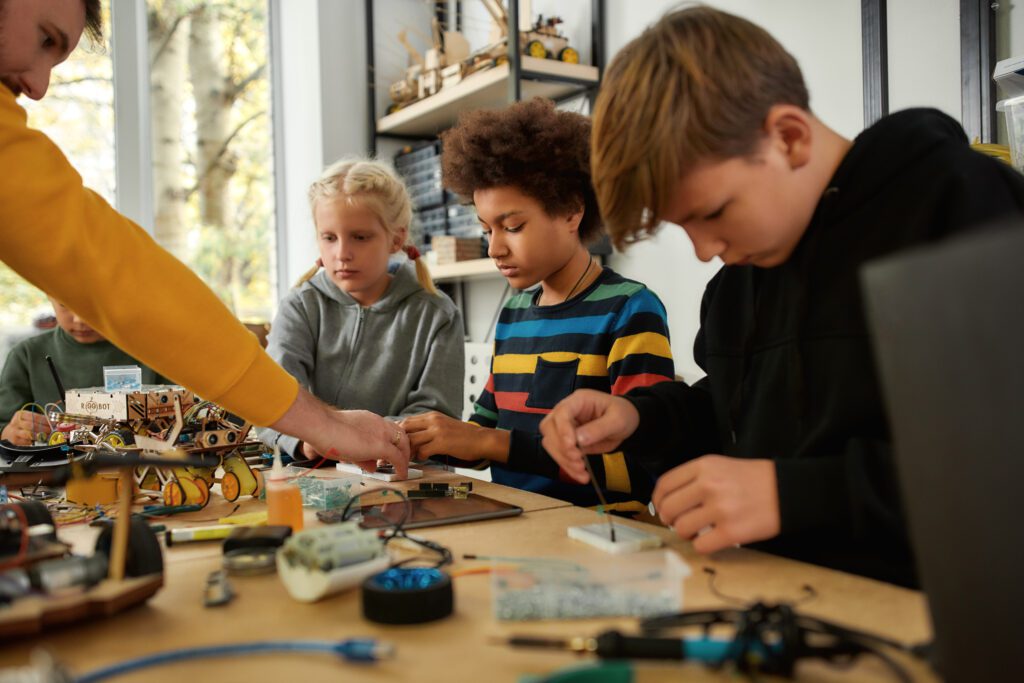Project-Based Learning

All Student-Centered Computing curricula use strategies common in Project-Based Learning (PBL) that serve to promote higher order thinking and deep learning, encourage students to collaborate and reflect, and highlight and value students’ prior knowledge.
These strategies are:
Collaboration
Students work in teams throughout the SCC curriculum, first in pairs, and later combining into larger shared-interest groups as they plan and build their digital products. During the programming units, students also engage in pair programming.
A Personally
Authentic Problem
or Question, Promoting
Student Voice & Choice
Central to the design of all Student-Centered Computing courses is students’ choice of the focal problem that will guide their work through the whole year. Students spend several weeks at the beginning of the year identifying multiple problems that they find personally authentic and interesting, and engaging in team exercises to help them narrow their choice to a problem with enough depth to engage them for the whole year. The curriculum is deliberately structured to help students eliminate the more superficial problems and to allow them to select the top 8-10 problems so they can continue working on them for the remainder of the year, without curtailing students’ personal motivations and interest.
Professional Authenticity
Students in Student-Centered Computing take on different professional roles, practice presenting to peers, develop a portfolio of their computer science skills, and create a professional resume. Many of these activities were designed to counter stereotype threat and encourage students to envision themselves in the role of a professional computer scientist.
Sustained Inquiry
All of the students’ work in Student-Centered Computing revolves around their focal problem. They pose questions, find online resources, conduct interviews with stakeholders, analyze previous solutions, and create digital artifacts. Throughout the course they develop Need-to Know lists that help inform their sustained work.
Critique, Revision, Reflection and Class Discussions
Students regularly review each other’s work, providing feedback that their classmates use to iteratively modify their digital products and artifacts. They also actively and routinely reflect on the process and their learning gains as they develop their personal portfolio and resume. The Student-Centered Computing curriculum also regularly directs the teacher to engage the students in group and class discussions.
Public Product, Communication
Each unit culminates with a showcase in which students share their products publicly to an appropriate and authentic audience. For websites, this may include people outside of the classroom, whereas for their musical and game creations the audience may be classmates. In each case students practice their communication skills, as well as their skills giving and accepting feedback.
